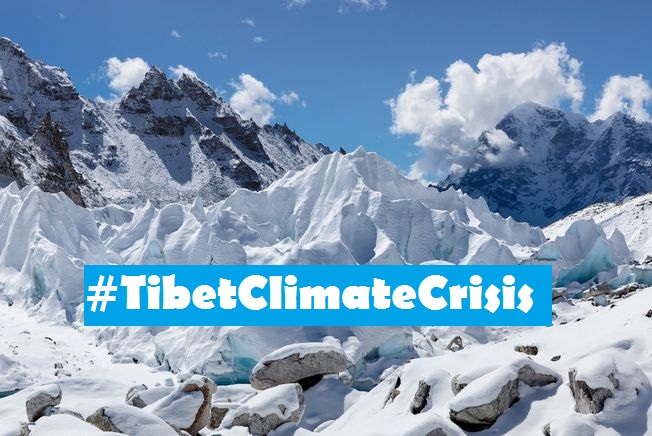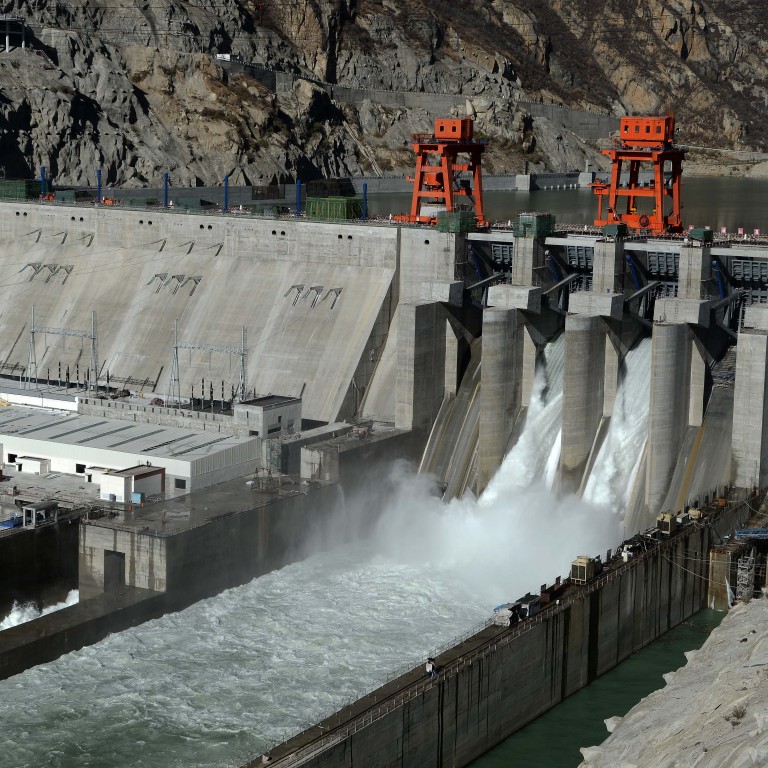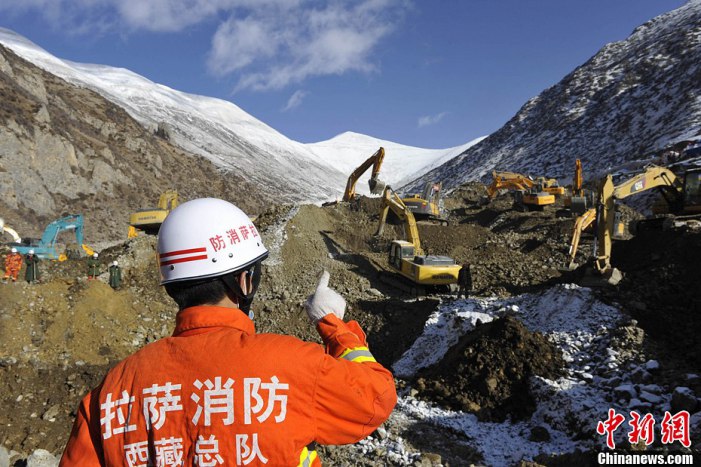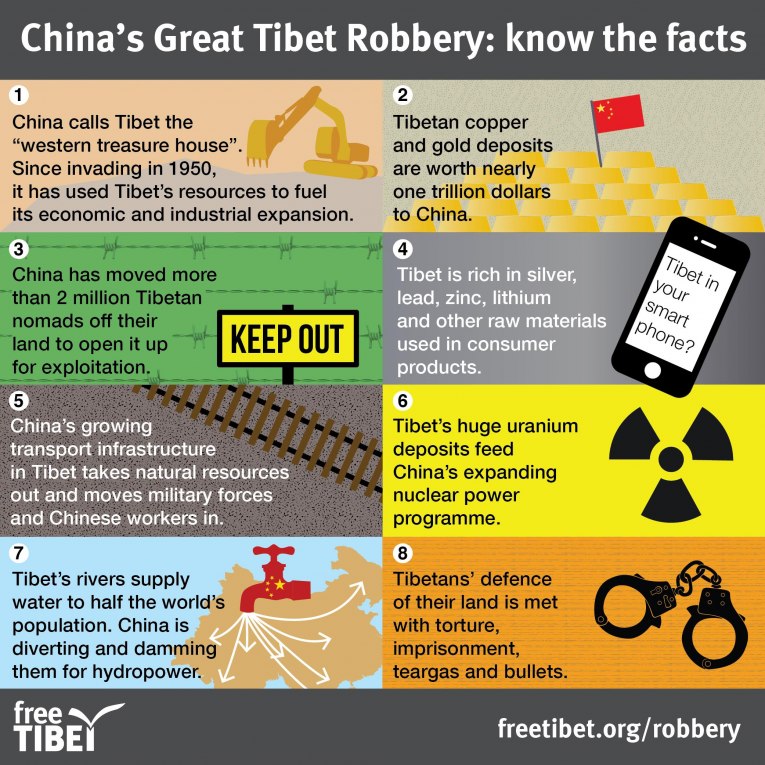
- Tibet is warming three times faster than the rest of the world and natural disasters such as droughts, landslides and floods are increasing in frequency.
- One of the key threats faced by Tibetans today is the eradication of their environment
- In recent years, China’s exploitation of Tibet’s natural resources has gathered pace significantly and Tibetans have no power to protect their own land
- For China’s government, Tibet’s water is another resource to be exploited, for hydro-electric power, diversion to supply people elsewhere in China
- Large Scale mining, damming and deforestation are leading to the Tibetan glacier melting at a faster rate
- The risks in Tibet is a global concern and requires decisive action from all countries to avoid a humanitarian crisis on unimaginable proportions in the coming decades.
The Tibetan Plateau, also known as the ‘Third Pole’ given its position and importance, is an extremely important region for global climate systems. This vast landscape is the birthplace of nine of Asia’s largest rivers, sustaining nearly two billion people. The plateau contains the largest amount of glacier ice outside of Antarctica and the North Pole and helps regulate climate systems across Asia.
However, Tibet’s unique environment is changing. Along with the Arctic and island nations, Tibet is on the frontline of global climate change and is warming three times faster than the rest of the world. Natural disasters such as droughts, landslides and floods are increasing in frequency. As glaciers and permafrost thaw, people in the mountains may be forced to migrate due to water shortages. Millions of people downstream may also feel the effects of this altered river flow. The health of Tibet’s environment will determine the health of climate systems across Asia and beyond.
“This blue planet is our only home and Tibet is its roof. The Tibetan plateau needs to be protected, not just for Tibetans, but for the environmental health and sustainability of the entire world.”
– Dalai Lama
One of the key threats faced by Tibetans today is the eradication of their environment, and the most pressing and comprehensive threat to Tibet’s environment is that of climate change. The Tibetan Plateau contains the largest concentration of frozen freshwater outside of the Arctic and Antarctica. But, its glaciers are receding at three times the global average due to climate change, resulting in eight billion tonnes of ice being lost every year as glaciers disappear. Between 1970 and 2010, Tibet lost over 27 per cent of its glacier coverage.
The depletion of Tibet’s glaciers risks seriously disrupting the flow of Tibet’s rivers, posing a threat to rural Tibetans and people downriver who rely on this water. Tibet’s fragile ecosystem could also be seriously damaged. These negative effects could be greatly exacerbated by the current construction of dams across Tibet’s rivers.
China’s exploitation of Tibet’s natural resources
In recent years, China’s exploitation of Tibet’s natural resources has gathered pace significantly. Tibetans have no power to protect their own land and must watch the economic benefits of its resources flow out of their country.
Water
The Tibetan plateau holds the third largest store of water-ice in the world and is the source of many of Asia’s rivers. Tibetan climate also generates and regulates monsoon rains over Asia.
For China’s government, Tibet’s water is another resource to be exploited, for hydro-electric power, diversion to supply people elsewhere in China, bottling as a consumer product, and even as a source of strategic influence over countries downstream who rely on water from Tibet’s rivers.

Damming has taken place or will soon take place on every major river in Tibet. These dams change water flow, create new lakes, disturb local ecosystems and have significant effects downstream, including stopping the flow of silt which makes agricultural land fertile. Dams and infrastructure such as new roads can force Tibetans from their land.
In a massive engineering project, China even plans to divert water from Tibet to feed 300 million of its own citizens.
Mining and Fossil Fuels
Chinese government owned mining companies are quickening their extraction of copper, gold and silver in Tibet. These mines are usually based close to rivers. Most workers in Tibetan mines are Chinese and the extraction takes place without regard to the local environment and areas of religious significance.
Tibet is also rich in other resources including lead, zinc, molybdenum, asbestos, uranium, chromium, lithium and much more. Tibet is China’s only source of chromium and most of its accessible lithium is in Tibet. These raw materials are used in manufacturing of household goods, computers and smartphones, among much else.
China is the world’s largest producer of copper and the world’s second biggest consumer of gold. The World Gold Council predicts that the consumption in China will double within a decade. Tibet’s reserves of copper and gold are worth nearly one trillion dollars.
China has recently drilled a 7 km borehole, to reach and explore Tibet’s oil and natural gas resources. China National Petroleum Corporation estimates the basin’s oil reserves at 10 billion tonnes.

Climate Change
As well as global climate change, industrial projects such as mining, damming and deforestation are leading to the Tibetan glacier melting at a faster rate, contributing in turn to further global warming.
Before the Chinese occupation there was almost no Tibetan industrialization, damming, draining of wetlands, fishing and hunting of wildlife. Tibet remained unfenced, its grasslands intact, its cold climate able to hold enormous amounts of organic carbon in the soil.
China has now moved millions of Tibetan nomads from their traditional grasslands to urban settlements, opening their land for the extraction of resources and ending traditional agricultural practices which have sustained and protected the Tibetan environment for centuries.
Support of Chinese government
The mining companies benefit from state financing of railways, power stations and many other infrastructure projects. Much of China’s significant transport infrastructure developments in Tibet have been intended to facilitate the movement of military forces into the country and the removal of natural resources from it.
Companies also benefit from finance at concessional rates to corporate borrowers, tax holidays, minimal environmental standards and costs, no requirement to compensate local communities and subsidised rail freight rates to get concentrates to smelters or metal to markets.
Targeting of Environment Activists

Further, climate activists in Tibet are being targeted and repressed by the Communist regime. Kunchok Jinpa, environmental activist who participated in huge protests in Driru in 2013 died earlier this month following injuries sustained in prison. Jinpa’s arrest stemmed from protests against a mining project at Naghla Dzambha Mountain in Driru in 2013.
According to Tibet Watch’s sources, local authorities tried to begin mining activities at the Naghla Dzambha Mountain in October 2013. The mountain is considered a holy and sacred site and the plans to carry out mining there prompted thousands of Tibetans to protest. The demonstrations were met with a violent crackdown in which thousands were arrested. Kunchok Jinpa shared information of these non-violent protests with the Tibetan community in India. He also called for environmental protection and a ban on mining in the region.
Petition to recognise Tibet’s Climate Crisis
The risks in Tibet is a global concern and requires decisive action from all countries to avoid a humanitarian crisis of unimaginable proportions in the coming decades.
FreeTibet, an organisation fighting for the independence of Tibet from Chinese occupation, has started a petition urging international recognition for Tibet at the UN Climate Change Conference (COP26) in Glasgow. FreeTibet says it will approach Ministers of Foreign Affairs and Environmental Affairs of participating countries with the signatures on their petition.

COP26 is the 26th United Nations Climate Change conference scheduled to be held in Glasgow, Scotland, from 1 to 12 November 2021 under the presidency of the United Kingdom. The conference is set to incorporate the 26th Conference of the Parties to the United Nations Framework Convention on Climate Change (UNFCCC), the 16th meeting of the parties to the Kyoto Protocol (CMP16), and the third meeting of the parties to the Paris Agreement (CMA3).
Unless governments of the world make a clear statement of support for Tibetans and recognise them as one of the frontline communities in the struggle against climate change, recovering from the climate emergency at the planet’s ‘Third Pole’ will remain a mirage.
